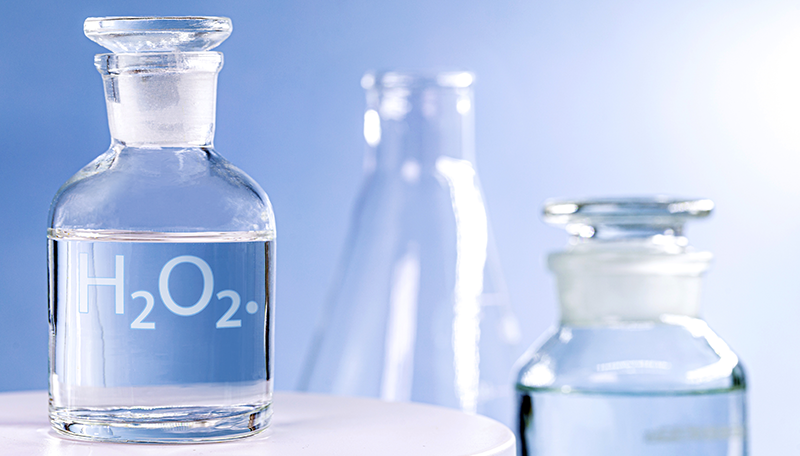Context & availability
The information below is only about ready-to-use hydrogen peroxide mouthwash (max. 3%) as available at drugstores. Dutchchems only sells technical hydrogen peroxide for industrial and laboratory applications – not for oral care or other cosmetic/medical purposes. This article is for information purposes only.
Hydrogen peroxide is a versatile agent that kills bacteria as well as inhibits the growth of mold and yeast. It is often used as a mouthwash to disinfect the mouth and throat, but also on the skin to clean wounds. This makes it an essential part of personal hygiene and first aid.
NOTE: Hydrogen peroxide for mouth rinsing is often a solution of no more than 3% and is available in small quantities at a drugstore as hydrogen peroxide mouthwash .
Important Properties of Hydrogen Peroxide
- Antibacterial effect: Hydrogen peroxide is effective in killing bacteria. It has a disinfectant and effervescent effect, killing many types of bacteria in the oral cavity.
- Mold and yeast inhibiting: In addition to bacteria, the growth of mold and yeast is also prevented.
- Mouthwash: It is an excellent means of disinfecting the oral cavity, ideal for oral infections such as gingivitis.
- Skin application: For the disinfection of superficial wounds, hydrogen peroxide can be applied directly to the skin.
- Side effects: A bad taste in the mouth and short-term irritation of the skin around wounds are known side effects. In addition, the substance has a bleaching effect, which can bleach hair, clothing and textiles when spilled. Therefore, handle hydrogen peroxide with caution.
Rinsing the mouth and wounds with hydrogen peroxide
In Oral Care
Rinsing with hydrogen peroxide is a particularly effective way to combat oral infections, such as gingivitis. It also prevents the formation of plaque, which is a common cause of gum problems. In addition, it is useful to rinse with hydrogen peroxide after dental treatments to prevent infection of wounds in the mouth.
For optimal oral hygiene, rinse your mouth 4 times a day for 1 to 2 minutes with 10 to 15 ml of hydrogen peroxide mouthwash of no more than 3%. Please note that hydrogen peroxide is not suitable for daily use due to its aggressive nature.
For wound care on the skin
To rinse a wound with hydrogen peroxide, you can apply a sterile gauze compress from a first aid kit to the wound. This helps keep the wound clean and healing. It is important to close the bottle of hydrogen peroxide immediately after use to maintain the effectiveness of the product.
Instructions for use for rinsing with hydrogen peroxide
For oral care, dilute hydrogen peroxide with water to a maximum concentration of 3% and rinse the mouth for one to two minutes, without swallowing the solution. For skin care, the product can be applied directly to the wound or using a sterile gauze compress. Always follow the advice of a doctor or pharmacist regarding frequency of use.
Conclusion
Rinsing with hydrogen peroxide is a valuable addition to the personal care routine for both oral and wound hygiene. Due to its antibacterial and antifungal properties, it supports health and aids healing. Be aware of side effects and always follow recommended usage instructions for safe and effective results.


